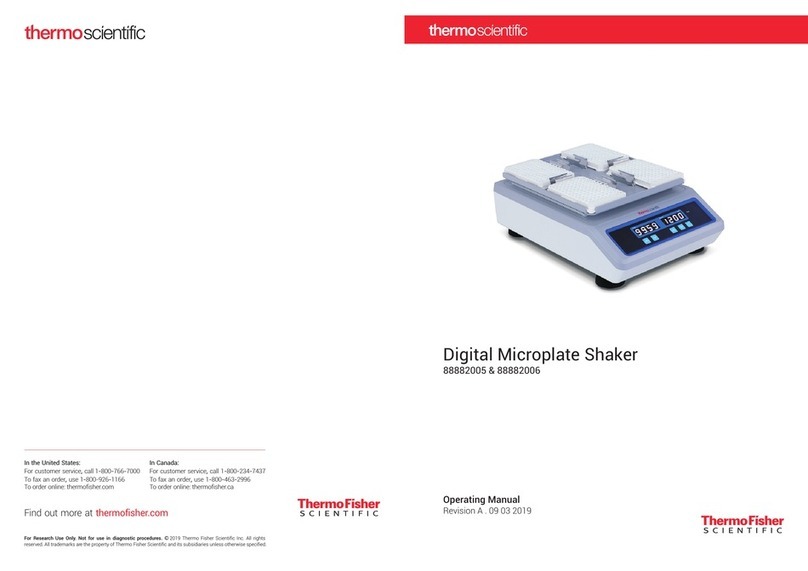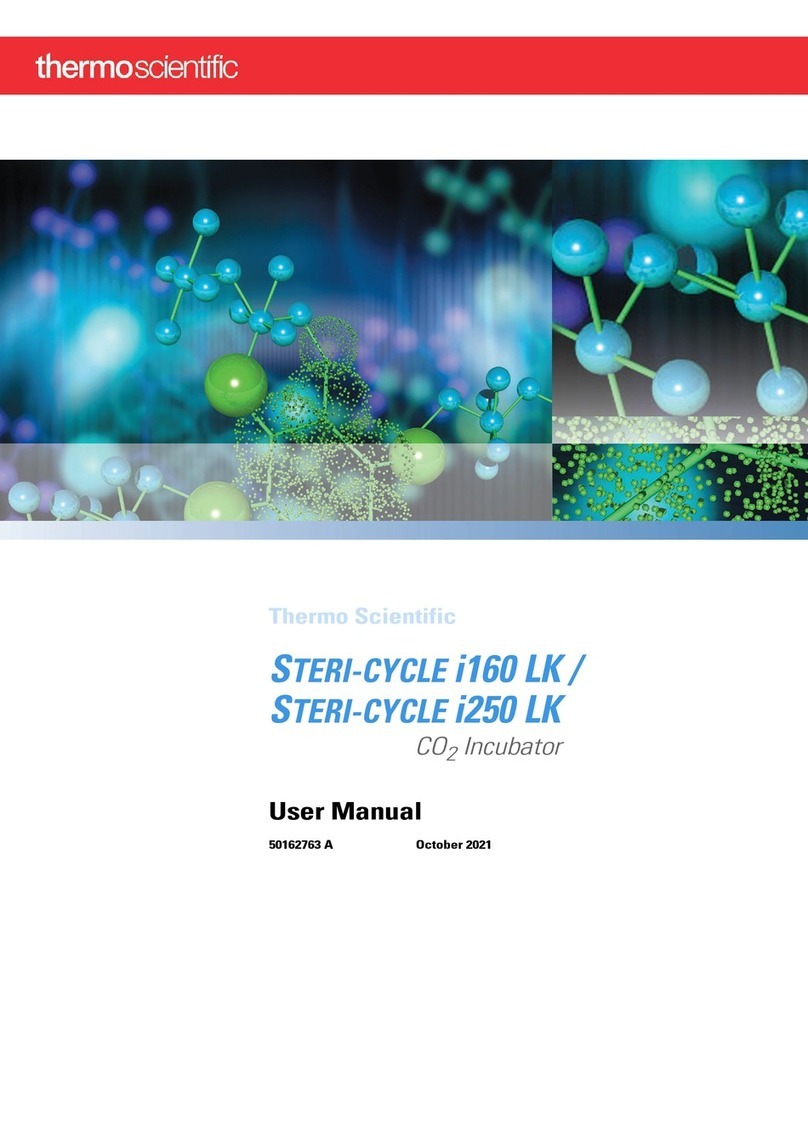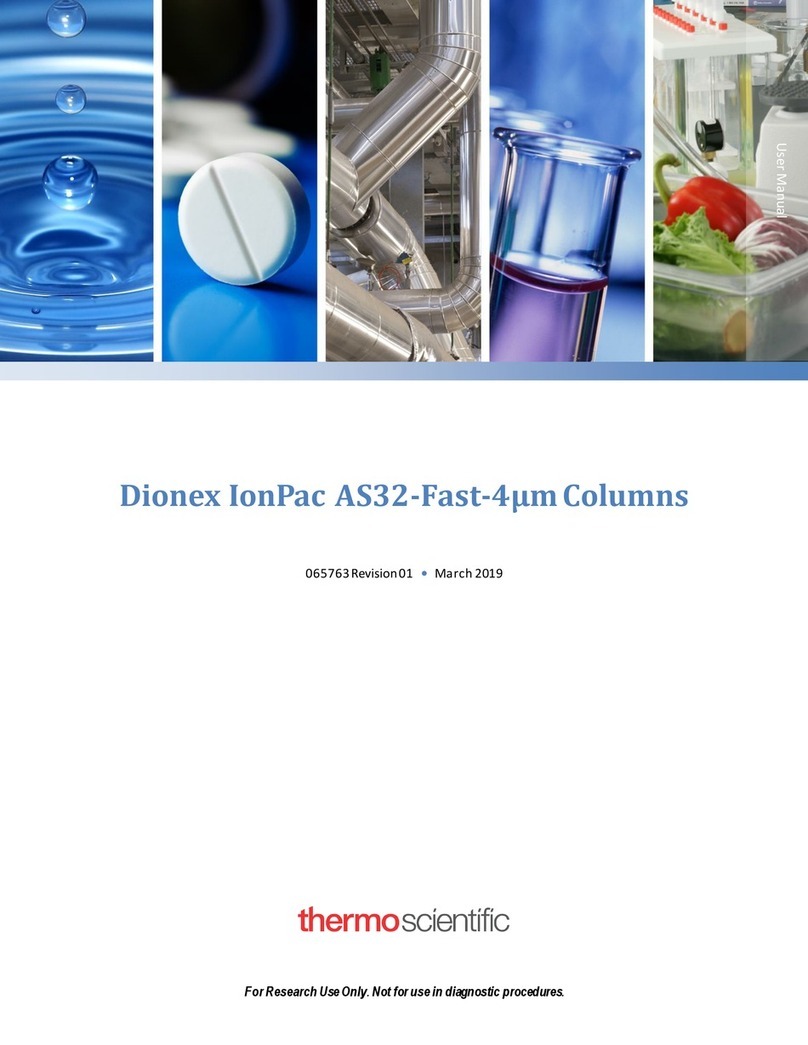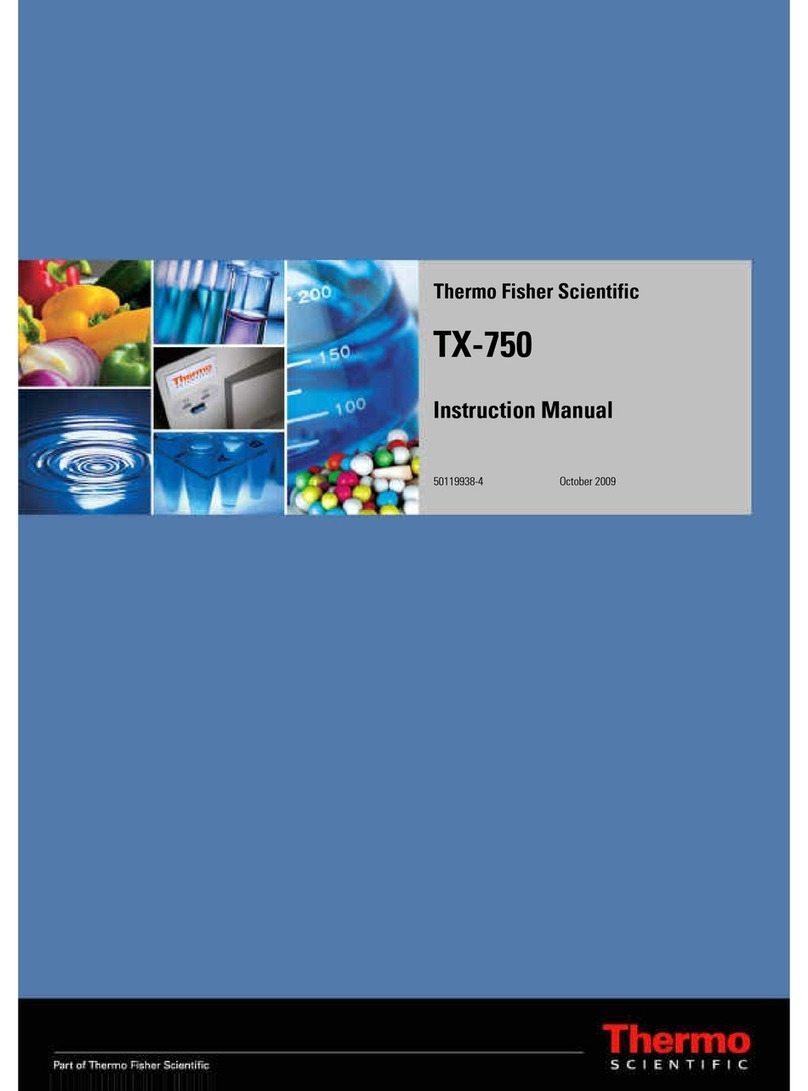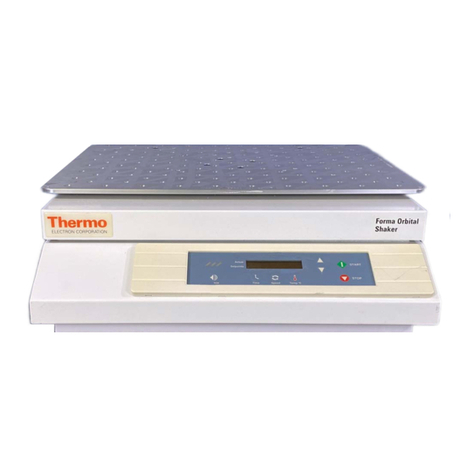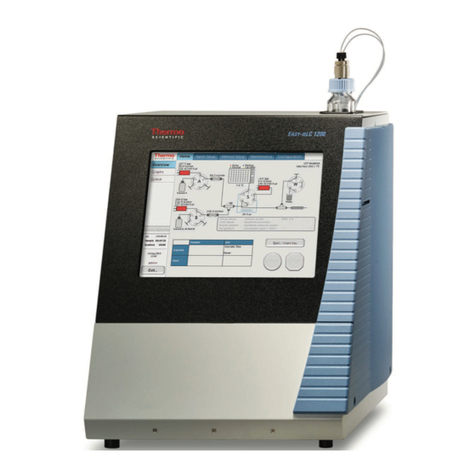
Cell culture procedure
Coat culture plates with Poly-D-Lysine
1. Dilute the Poly‑D‑Lysine solution in sterile DPBS to prepare
a 50 µg/mL working solution.
2. Coat the surface of the culture vessel (German glass or cell
culture grade plastic) with 50 µg/mL Poly‑D‑Lysine solution.
For primary neurons, use 0.15 mL/cm2 surface area.
3. Incubate the vessel for 1 hour at room temperature.
4. Remove the Poly‑D‑Lysine solution, and rinse the culture
surface 3 times with sterile distilled water.
Make sure to rinse the culture vessel thoroughly as excess
Poly‑D‑Lysine solution can be toxic to the cells.
5. Remove distilled water and leave the coated culture vessel
uncovered in the laminar hood to dry.
The culture surface will be fully dry after 2 hours.
Plates can be used immediately once dry or can be stored dry
at 4°C. For storage at 4°C, tightly wrap the vessel with
Paralm™ lm and use within one week of coating.
Culture neurons
1. Isolate primary rat neurons or thaw cryopreserved primary
rat neurons according to standard laboratory procedure or
instructions supplied with the cells; see “Recover
cryopreserved cells“.
2. Plate cells in pre‑warmed (37°C) complete
Neurobasal™‑A/B‑27™ medium (postnatal) or
Neurobasal™/B‑27™ medium (prenatal), at a suggested
density of 160 cells/mm², or another optimized density if
required.
3. Incubate the culture dish at 36°C to 38°C in a humidied
atmosphere of 5% CO2 (in air is acceptable but 9% oxygen
with 5% CO2 is preferable).
4. After 4–24 hour incubation, aspirate half of the medium and
replace with same volume of fresh medium.
Return the plate to the incubator.
5. Refeed cells every 3–4 days by removing half of the medium
and replacing it with an equal volume.
6. Refeed cells (day 3 or 4 post‑plating and every 3 days
thereafter) by removing one‑half of the medium and
replacing with an equal volume.
Medium changes for prenatal neurons should be made with
Neurobasal™/B‑27™ medium without glutamate, to reduce
glutamate toxicity in the culture. For postnatal neurons use
Neurobasal™‑A/B‑27™ medium, without glutamate,
supplemented with 10 ng/mL bFGF.
Note: Include glutamate in the medium for plating and
subsequent media changes when culturing neuroblastoma
cells.
Recover cryopreserved cells
Primary neuronal cells are extremely fragile upon recovery from
cryopreservation.
IMPORTANT! Do not centrifuge cells.
Primary neuronal cells will adhere to bare plastic and glassware;
to maximize cell recovery and yield we recommend pre‑rinsing all
plastic and glassware with complete Neurobasal™/B‑27™ medium
before use.
1. Prepare Poly‑D‑Lysine coated sterile culture vessels ahead of
time (see “Coat culture plates with Poly‑D‑Lysine“).
2. Rapidly thaw (<1 minute) frozen vial of cells in a 37°C water
bath.
Remove vial from water bath just before the last trace of ice
has melted.
3. Rinse a pipee tip with complete medium and very gently
transfer the cells from the cryovial to a prerinsed 15‑mL
conical tube.
4. Rinse the cryovial with 1 mL of pre‑warmed complete
Neurobasal™/B‑27™ medium, and transfer the rinse to the 15‑
mL tube containing the cells at a rate of one drop per second.
Mix by gentle swirling after each drop.
5. Dropwise add 2 mL of complete Neurobasal™/B‑27™ medium
to the tube (for a total suspension volume of 4 mL).
Mix by gentle swirling after each drop.
6. Determine viable cell density using a Countess™ II
Automated Cell Counter.
7. Plate ~1 × 105 cells per well in Poly‑D‑Lysine coated 48‑well
plate or an 8‑chambered slide. Bring the cell suspension
volume to 500 µL per well by adding complete
Neurobasal™/B‑27™ medium.
8. Incubate the cells at 37°C in a humidied atmosphere of
5% CO2 in air (9% oxygen with 5% CO2 is preferable).
9. See “Culture neurons“ step 4–step 6.
2
Neurobasal
™
Medium and Neurobasal
™
‑A Medium User Guide

